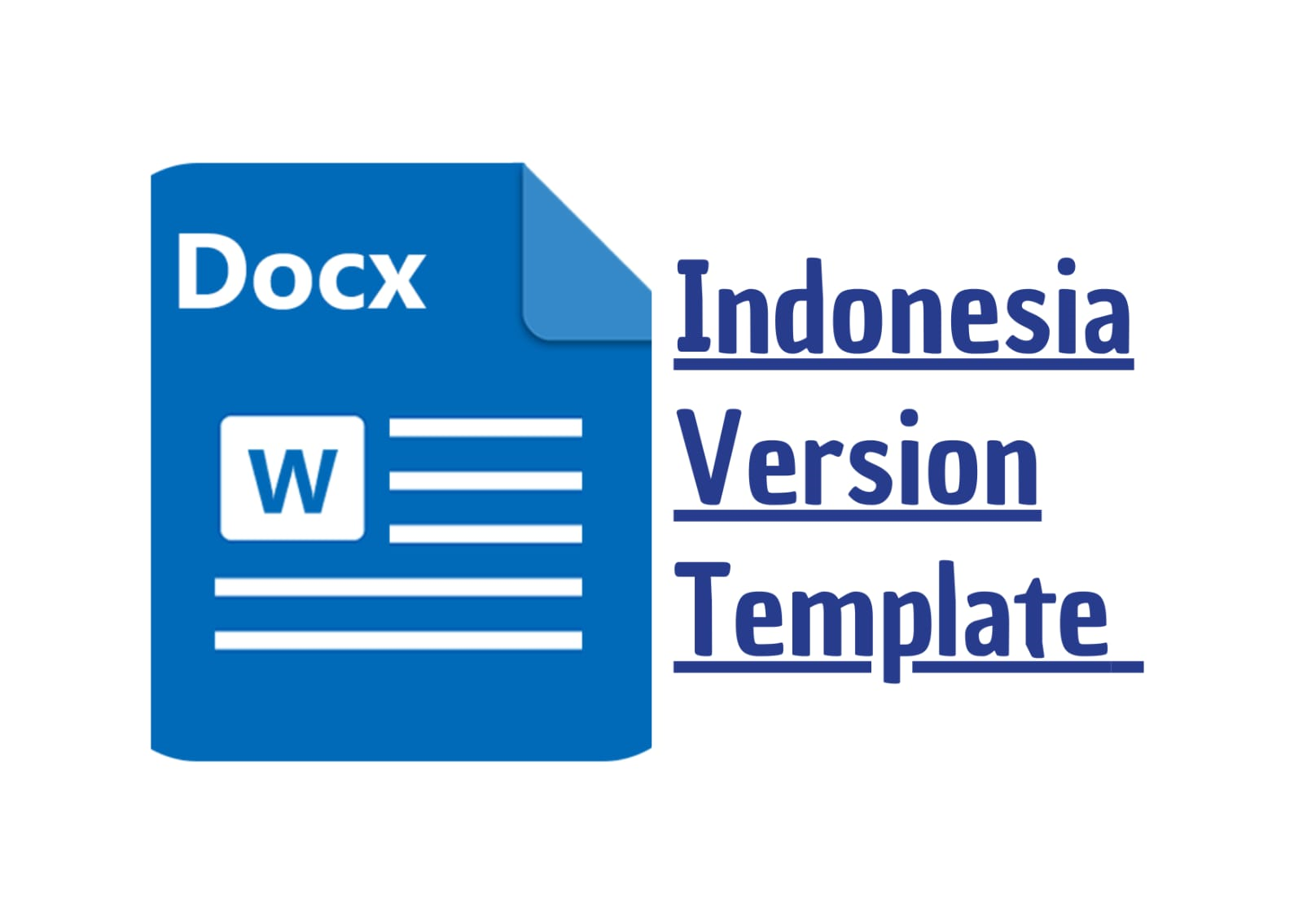Interferensi Bahasa Inggris Ke Dalam Bahasa Indonesia Pada Berita Daring Catch Me Up!: Kajian Sosiolinguistik
DOI:
https://doi.org/10.56799/jim.v3i1.2600Keywords:
Language Interference, Forms of Language Interference, Language Interference Factors, Online NewsAbstract
This research is titled "English Language Interference into Indonesian Language in Online News: Catch Me Up!: A Sociolinguistic Study." Catch Me Up! is an online news service designed for the Millennial and Generation Z demographics. Numerous instances of English language interference were identified in the use of Indonesian language in Catch Me Up! online news, raising concerns about the potential displacement of standard Indonesian language in news writing. The objectives of this research are (1) to identify the types of English language interference into Indonesian language found in Catch Me Up! online news based on the examination of the direction of borrowing elements, the origin of borrowed elements, and the actors involved, (2) to identify the forms of English language interference into Indonesian language found in Catch Me Up! online news based on the examination of the field of the borrowed elements, and (3) to determine the factors causing the forms of English language interference into Indonesian language found in Catch Me Up! online news by reviewing non-linguistic elements. The theory used is Language Interference according to Jendra. The data collection method and technique used are the free conversation observation method with note-taking technique. The data analysis methods used are the distribution method and the matching method. The distribution method uses the basic technique for direct elements with advanced techniques, namely disappearance technique, substitution technique, and paraphrael technique. The matching methods used are referential matching method and translational matching method, comparison technique of equalizing and comparison technique of distinguish. In the data presentation stage, both formal and informal methods are used. In this research, it is found that English language interference into Indonesian language in Catch Me Up! online news is a two-way interference when examined from the direction of borrowing elements, is a non-relative interference when viewed from the origin of borrowed elements, and includes interference in the grammatical field, namely morphology and syntax, and interference in the lexical field when viewed from the field aspect. The forms of morphological, syntactic, and lexical interference in this research are as follows: (1) Morphological interference occurs in the formation of Indonesian words with English affixes and the use of basic English morphemes in the process of forming Indonesian words morphologically. The English affixes used are the suffixes -s and -ly. The morphological process that is interfered with by basic English morphemes includes the prefixation processes ke-, me-, di-, nge-, and se-; suffixation process -an, and morphological process. (2) Syntactic interference includes the use of English sentence constructions and the use of English syntactic elements in Indonesian sentences. Sentence construction interference includes the use of copula and relative pronouns influenced by English grammatical rules. The use of English syntactic elements includes English clauses used in embedded sentences, subordinate compound sentences, and coordinate compound sentences. (3) Lexical interference includes the use of English vocabulary, including basic words, affixed words, abbreviations, compound words, and phrases. Factors influencing the occurrence of English language interference into Indonesian language in Catch Me Up! online news include linguistic and non-linguistic factors.
Downloads
References
Arikunto, Suharsimi. 2014. Prosedur Penelitian Suatu Pendekatan Praktik. Jakarta: Rineka Cipta.
Bay, Indri Wirahmi. 2018. Interferensi Gramatikal Bahasa Indonesia Dalam Penggunaan Bahasa Inggris. Yogyakarta: Zahir Publishing.
Benczes, Reka. 2005. Creative Compounding in English. Amsterdam: John Benjamin Publishing Company.
Catch Me Up!. 2022. Tentang Kami. (Online) https://catchmeup.id/tentang-kami/.
Chaer, Abdul dan Leonie Agustina. 1995. Sosiolinguistik: Suatu Pengantar. Jakarta: Rineka Cipta.
Chaer, Abdul dan Leonie Agustina. 2014. Sosiolinguistik: Perkembangan Awal. Jakarta: Rineka Cipta.
Chaer, Abdul. 2009. Sintaksis Bahasa Indonesia (Pendekatan Proses). Jakarta: Rineka Cipta.
Chaer, Abdul. 2015. Morfologi Bahasa Indonesia (Pendekatan Proses). Jakarta: Rineka Cipta.
Diakses pada 10 Oktober 2022.
Firmansyah, Muhammad Arif. 2021. “Interferensi dan Integrasi Bahasa: Kajian Sosiolinguistik”. Paramasastra. 8(1). hlm. 48-49
Irawan, Bayu Candra. 2020. “Campur Kode dalam Artikel Daring Mojok.co: Kajian Sosiolinguistik” (skripsi). Denpasar: Fakultas Ilmu Budaya Universitas Udayana.
Jendra, I Wayan. 2007. Sosiolinguistik Teori dan Penerapannya. Surabaya: Paramita.
Miauliyasari, Valen. 2020. “Interferensi Bahasa Inggris Terhadap Bahasa Indonesia Pada Media Luar Ruang di Kecamatan Pacitan Kabupaten Pacitan: Suatu Tinjauan Sosiolinguistik” (tesis). Pacitan: Sekolah Tinggi Keguruan dan Ilmu Pendidikan Persatuan Guru Republik Indonesia Pacitan.
Moleong, Lexy. J. (2000) Metodologi Penelitian Kualitatif, Bandung: PT Remaja Posdayakarya.
Nababan. P. W. J. 1984. Sosiolinguistik. Jakarta: Gramedia
Natalia, Serly dan Tita Wulandari “Identifying Types of Affixes
Natalia, Serly dan Tita Wulandari. 2017. “Identifying Types of Affixes in English and Bahasa Indonesia” Holistics Journal, 9(17), hlm. 8–22.
Ngalim, Abdul. dkk. (2018) “Interferensi Leksikom Bahasa Inggris ke dalam Bahasa Indonesia pada Promosi Penjualan”. Seminar Nasional KBSP V, hlm. 457–462
Nurhana, Gita dkk. (2020). Interferensi Bahasa Indoneisa Pada Acara “My Trip My Adventure” di TRANS TV Edisi Bulan Maret 2019 (Kajian Sosiolinguistik). Widyabastra, 8(1), hlm. 31–39.
Putri, Meliyana Puspasari. 2018. “Interferensi Bahasa Inggris ke Bahasa Indonesia Berbasis Media Komunikasi Elektronik Telepon Genggam” (tesis). Surakarta: Sekolah Pascasarjana Universitas Muhamadiyah Surakarta.
Romli, A. S. M. (2018). Jurnalistik Online Panduan Mengelola Media Online. Nuansa Cendekia.
Saranita,Willa. 2021. Skripsi. “Interfernsi Bahasa Inggris dalam Bahasa Indonesia di Kanal Youtube Gita Savitri Devi”. Program Studi Bahasa dan Sastra Indonesia, Fakultas Keguruan dan Ilmu Pendidikan, Universitas Bung Hatta.
Satriawati, Sholikhah dkk. 2019. “Interferensi Bahasa Inggris Ke Dalam Bahasa Indonesia Koreka Lewat Media Sosial Twitter”. The 10th University Reserch Colloqium 2019, hlm. 148–156.
Sudaryanto. 2015. Metode dan Aneka Teknik Analisis Bahasa. Yogyakarta:Sanata.
Sukatmo, Sukatmo. 2022. Penggunaan Bahasa Indonesia Di Kalangan Generasi Milenial. Inspirasi Dunia: Jurnal Riset Pendidikan Bahasa, 1 (4), hlm. 62-69
Willa Saranita, 2021. Skripsi. “Interferensi Bahasa Inggris dalam Bahasa Indonesia di Kanal Youtube Gita Savitri Devi”. Program Studi Bahasa dan Sastra Indonesia, Fakultas Keguruan dan Ilmu Pendidikan, Universitas Bung Hatta.
Downloads
Published
How to Cite
Issue
Section
License
Copyright (c) 2023 I Komang Vio Vandi, I Nyoman Suparwa, Anak Agung Putu Putra

This work is licensed under a Creative Commons Attribution-ShareAlike 4.0 International License.




















